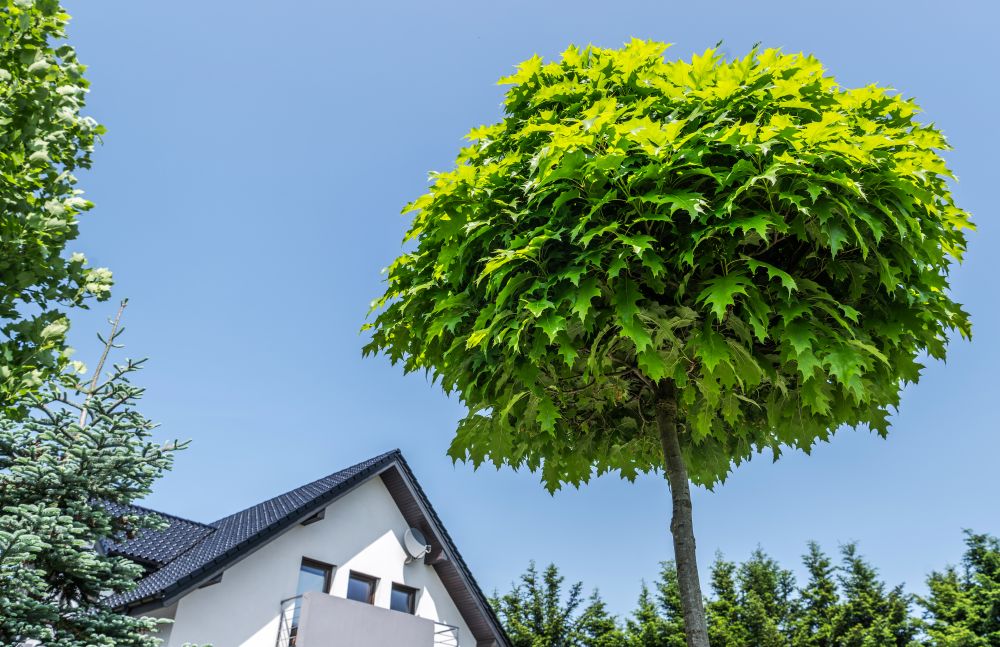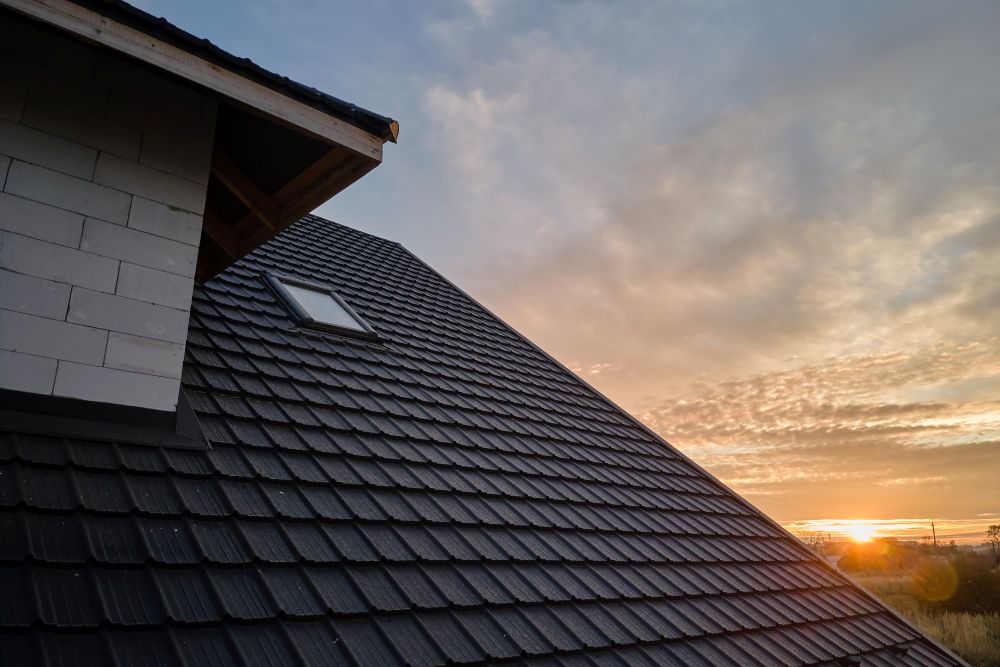How Trees Near Your Home Can Affect Your Roof in Simi Valley

Trees add charm, character, and curb appeal to homes across Simi Valley. But while that towering sycamore or shady oak might make your backyard feel serene, it could be doing a number on your roof—quietly, consistently, and sometimes catastrophically. At Infinity Roofers, we’ve seen the damage firsthand. From clogged gutters to full-blown structural issues, tree-damaged roofs are more common than you’d expect.
So, before you write off that overhanging branch as “just a leaf dropper,” let’s walk through the real risks and the simple steps you can take to protect your roof from nature’s leafy giants.
Leaf Debris: The Gateway to Bigger Problems
Let’s start with the basics. Those crunchy brown leaves that look harmless on your lawn? When they land on your roof and stay there, they begin to trap moisture. This creates a perfect breeding ground for mold, moss, and mildew, especially in roof valleys and near roof ventilation.
Worse, when leaves accumulate in gutters, they cause clogged gutters from trees. And clogged gutters don’t just overflow—they cause water to back up under your shingles, pool near fascia boards, and potentially leak into your attic. Hello, hidden water damage and warped wood.
Routine seasonal tree cleanup is essential, especially in fall and after high winds.
Overhanging Branches and Shingle Scraping
Have a branch that just barely grazes your roof when the wind blows? Even minor contact can cause serious wear over time. The granules on asphalt shingles act as UV protection, and once they’re gone, your roof becomes more vulnerable to sun, rain, and heat.
Unchecked branches can also lift shingles from roots, crack flashing, and dislodge vents. And if that branch breaks and lands hard enough? You’re looking at immediate falling limb roof repair—or even a full roof replacement.
To prevent this, maintain a proper tree safety zone. Ideally, branches should be 10 feet away from the roof surface, and trees should be trimmed regularly by professionals to avoid overcutting or imbalance.
Critters Love a Tree-to-Roof Highway
Squirrels, raccoons, rats, and even birds view trees as the ultimate on-ramp to your home. With close branches, they can easily hop onto your roof and wreak havoc.
These uninvited guests often:
- Chew through shingles and decking
- Nest in vents and chimneys
- Scratch or claw roofing membranes
- Leave droppings that damage surfaces
Not only is this a sanitation issue, but it can also lead to roof leaks from branch impact when animals dislodge flashing or shingles during their travels.
Trimmed trees limit access and make your roof a much less appealing Airbnb for furry tenants.
Water Pooling & Mold Growth: The Silent Destroyers
One of the more overlooked threats from trees is water pooling near eaves. When debris piles up in valleys or around vents, it slows water drainage. In heavy rain, this leads to puddles that sit and seep into your roof.
This creates the ideal environment for roof mold from leaves and roof algae growth, both of which eat away at your shingles over time.
Mold is more than a visual nuisance. It can degrade your roof’s structure and lead to internal leaks that drip into insulation or walls, causing costly long-term damage.
Tree-Related Roof Damage: What to Watch For
If you’re wondering whether your beautiful backyard foliage is doing damage, here are some warning signs to keep an eye on:
- Dark streaks or moss near roof valleys
- Visible shingle curling or granule loss
- Sagging gutters full of debris
- Critter noises or droppings in the attic
- Broken branches on or near the roof after windstorms
- Stains on the ceilings inside your home
Don’t ignore these! Often, they’re the first hint of a bigger issue that could be brewing above your head.
Trimming Trees Near Roof: DIY or Pro Job?
Trimming trees near the roof may seem like an easy Sunday project, but beware. One wrong cut can unbalance the tree, damage your roof, or land you in the ER.
Here’s when to DIY:
- Branches are small (under 2 inches thick)
- They’re easy to reach with a ladder secured on level ground
- You have proper safety gear and experience
Here’s when to call a pro:
- The branch hangs directly over your roof
- You need to use a chainsaw or climb into the tree
- The tree is large, leaning, or unstable
Professional arborists can also identify potential roof debris from trees before it becomes a problem.
Tree Damage and Roofing Insurance in Simi Valley
Yes, tree-related insurance claims are a real thing, and they happen more often than you’d think. Your homeowner’s policy may cover:
- Sudden damage from a fallen limb (especially after storms)
- Emergency tarping and temporary repairs
- Partial or full roof replacement, depending on the impact
But here’s the catch: If the tree was obviously rotting, overhanging, or not maintained, your claim could be denied. That’s why routine maintenance isn’t just smart—it’s strategic.
Don’t Let a Tree Topple Your Roof

Your roof should be protected from the elements, not ambushed by them. If you’re dealing with overgrown trees, fallen branches, or gutter disasters, it’s time to take action.
Infinity Roofers is your local expert in spotting, diagnosing, and resolving roof debris from trees, overhanging branches roof damage, and everything in between.
Call today to schedule a free roof inspection. We’ll climb up, check it out, and give you a clear plan to keep your roof tree-proof and stress-free!
❓ FAQ: Tree and Roof Concerns in Simi Valley
Do certain tree species cause more roof problems than others?
Yes, fast-growing or softwood trees like eucalyptus, pine, and jacaranda tend to drop more debris and are more prone to breaking in wind. Large-leaved deciduous trees can also cause frequent clogging. If you’re landscaping, consider trees with smaller leaves or slower growth patterns, and always place them a safe distance from your roofline.
How often should you have trees near your roof professionally trimmed?
In Simi Valley’s climate, it’s best to have trees trimmed at least once per year—ideally in late winter or early spring before new growth. However, if your property has fast-growing trees or you’ve recently experienced a storm, more frequent trimming may be necessary to prevent issues.
Can tree roots really affect a roof?
Surprisingly, yes—indirectly. While roots won’t reach your roof physically, they can affect your foundation. If roots compromise the stability of the tree, the whole tree can lean or fall onto your roof during wind or rain, causing severe structural damage. This is why tree safety zone planning is essential.
➡️ Up Next: HOA Rules, Roofs & Red Tape
Don’t miss our next article:
“How HOA Rules Affect Roofing Projects in Simi Valley Neighborhoods.“
We’ll break down color restrictions, permit nightmares, and how to keep your board happy and your roof protected.
Stay sharp, Simi Valley! 🏡🌿
